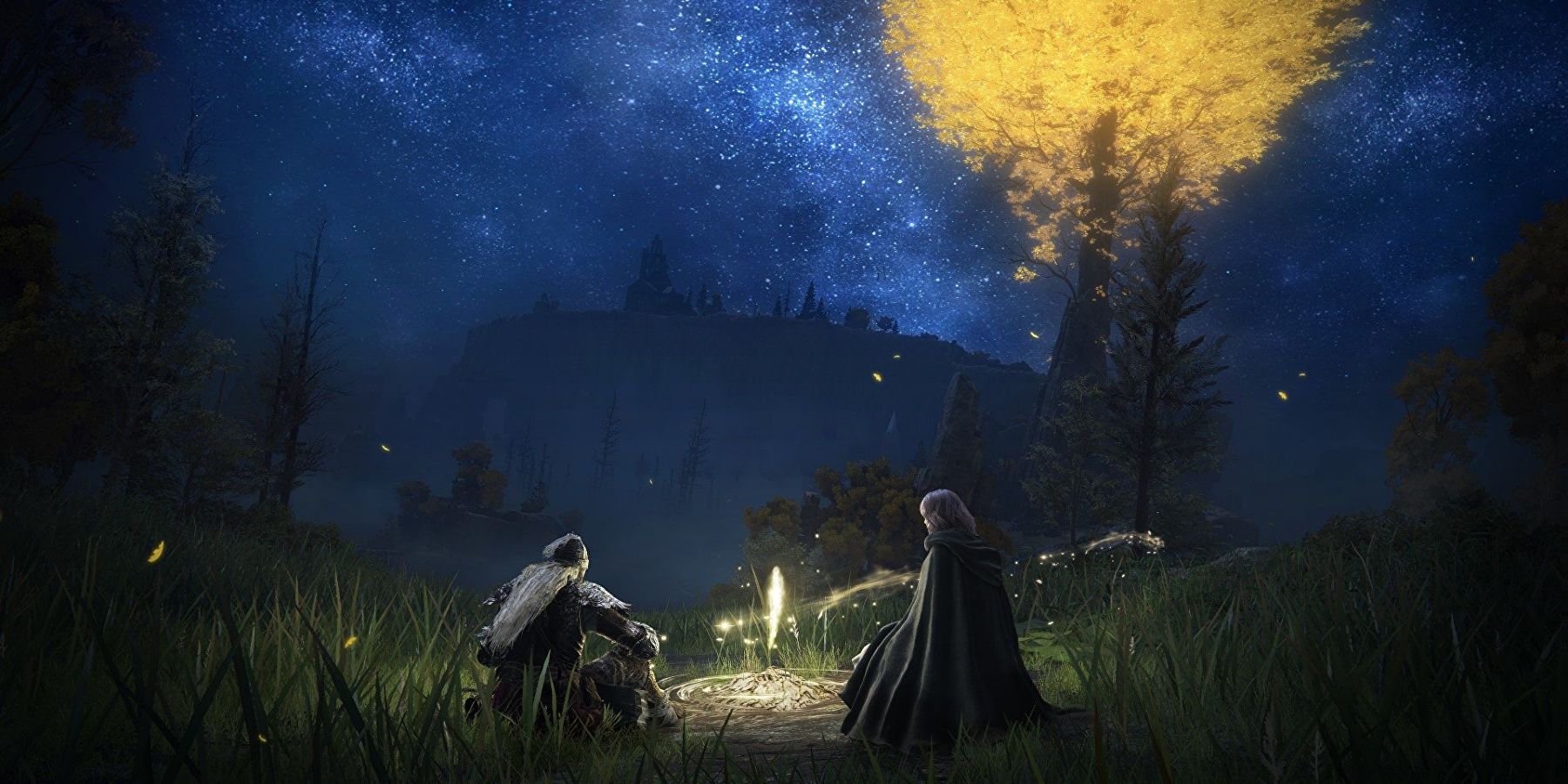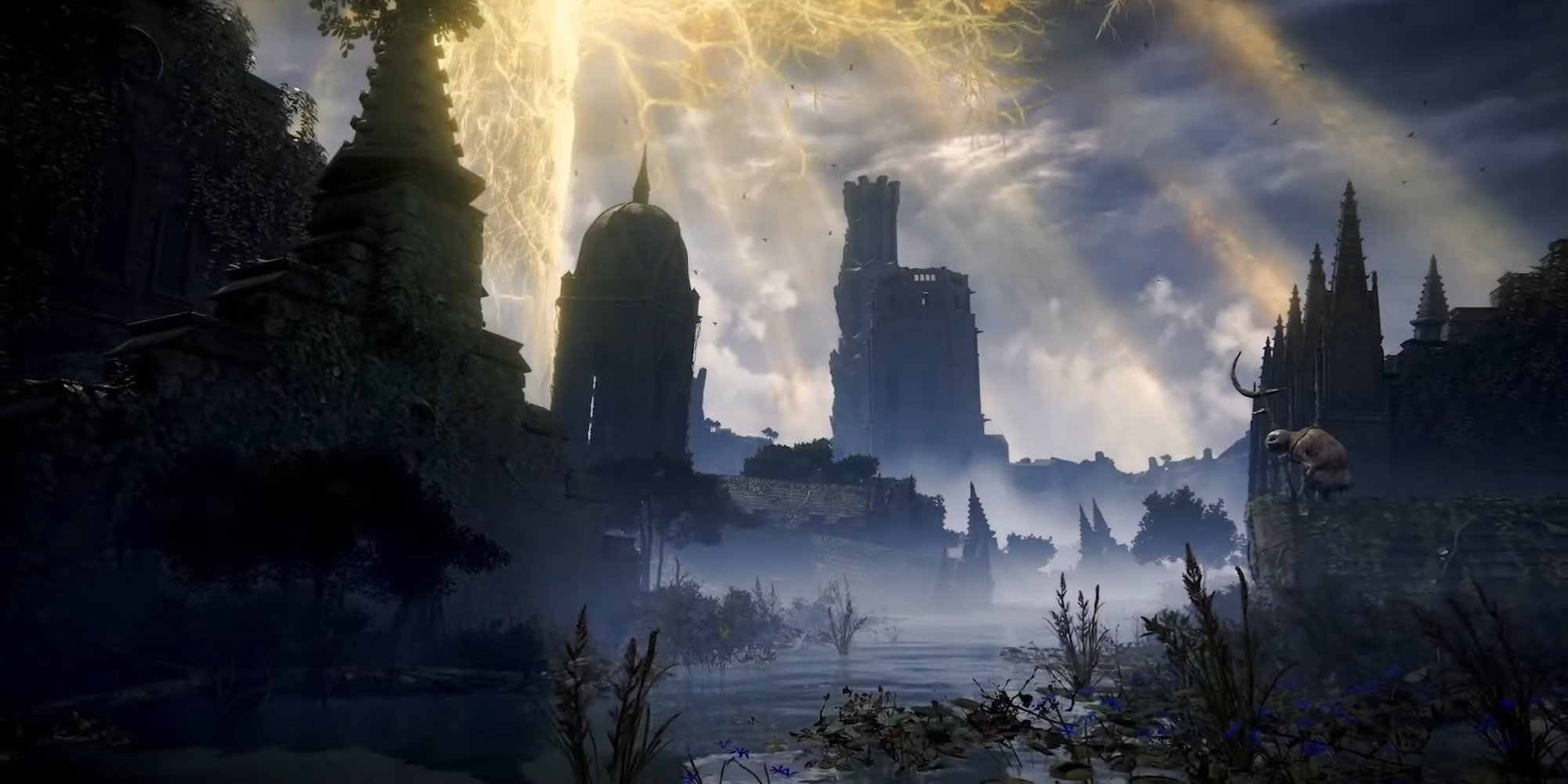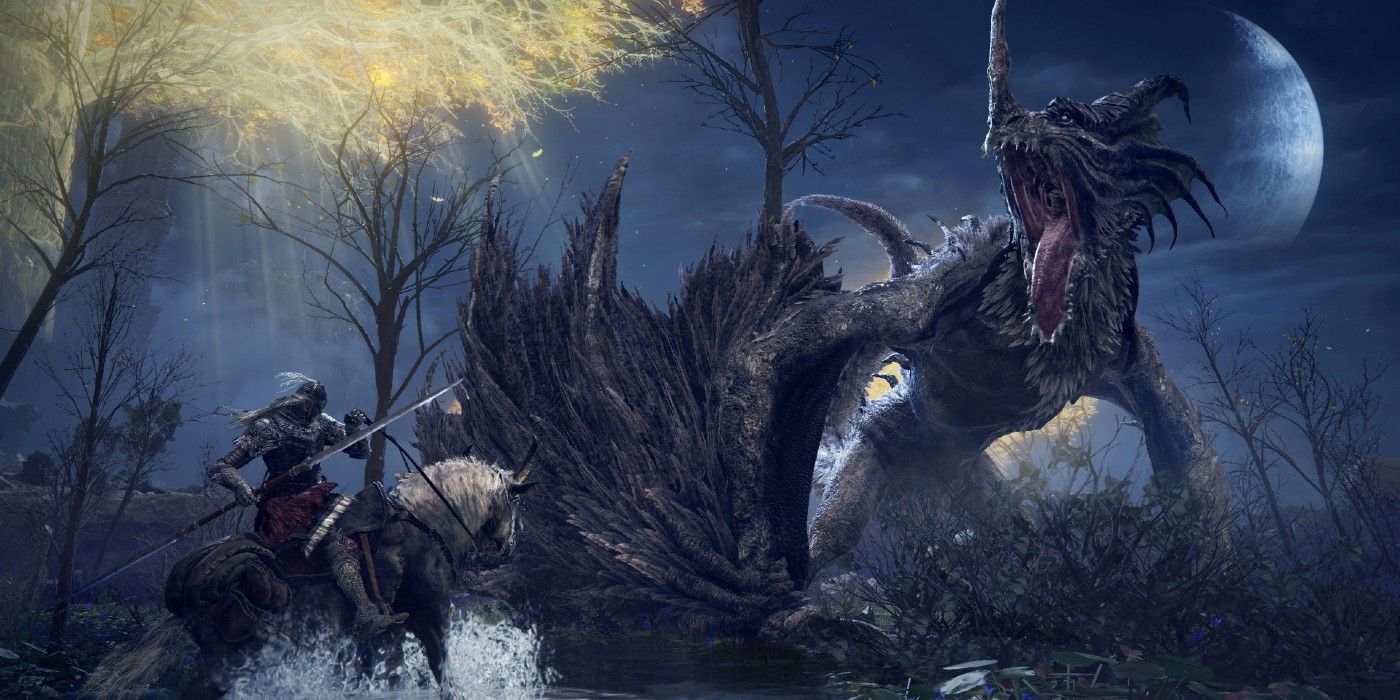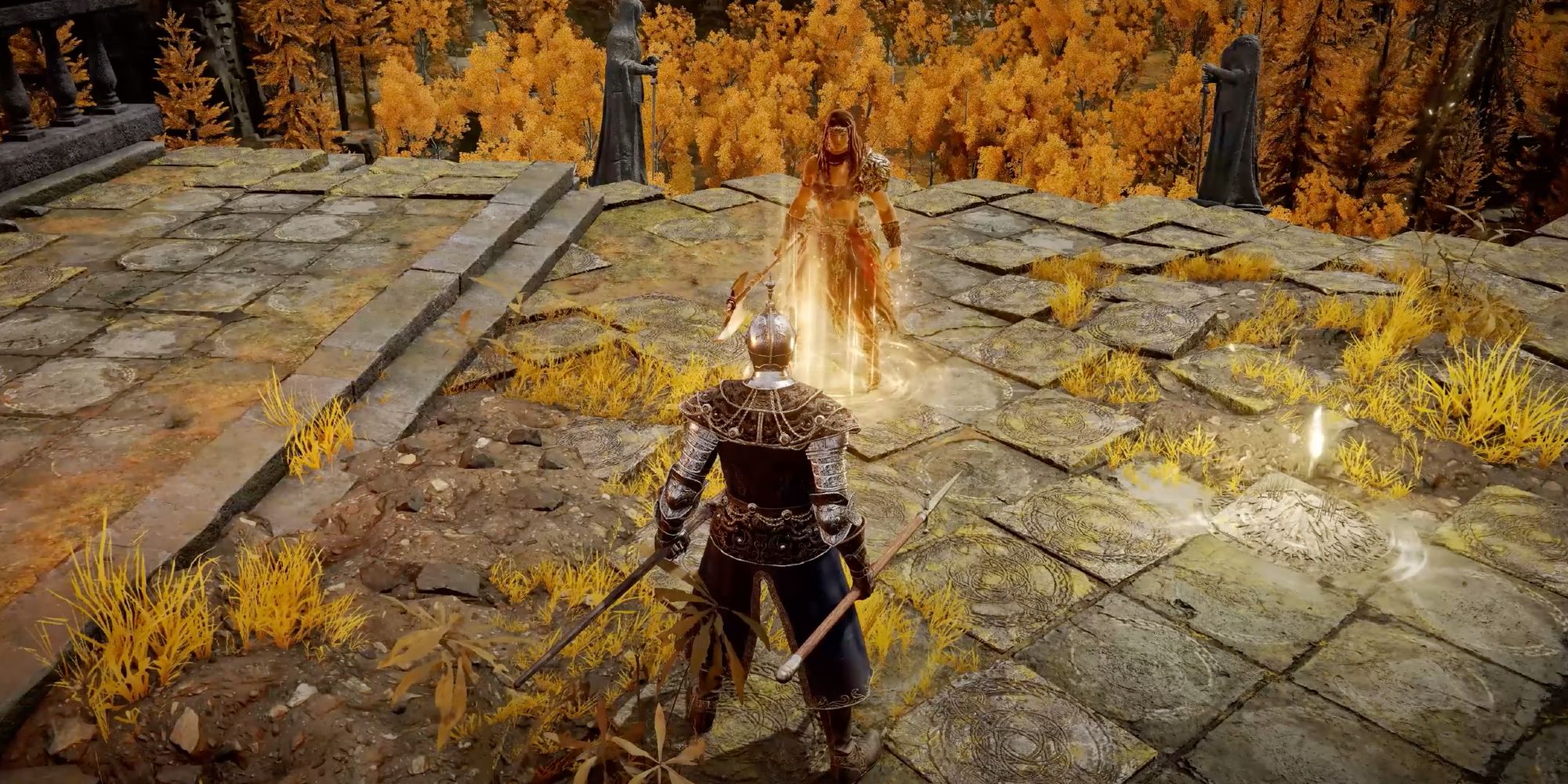
The Elden Ring closed network test allowed developer FromSoftware to give the game's multiplayer a trial run and see if any glaring issues were found, but it doubled as a demonstration of what will almost assuredly be a game of the year contender in 2022. Even from the rather limited glimpse into Elden Ring's full scope, it's clear that fans of FromSoftware's more recent catalogue will glean considerable enjoyment out of it. Elden Ring is at once ambitious and familiar, boldly adapting the likes of Dark Souls into a truly open world while ensuring that the essential components of FromSoftware's style remain intact.
Elden Ring feels like not only a culmination of the developers' work since 2009's Demon's Souls, but also the beginning of a new era; one that can deliver on the grand scope usually reserved for FromSoftware's precise world building. Boletaria, Lordran, Drangleic, Lothric, Yharnam, and Ashina are all expansive and deep game worlds conceptually, and while none of them are particularly small in terms of playable space, all will seemingly pale in comparison to Elden Ring's Lands Between. The size of the playable area in Elden Ring's closed network test wasn't especially impressive in and of itself, but extrapolating on what was seen, in conjunction with what has been teased, points to a potentially dazzling amount of content.
While presented in a grand new scale, Elden Ring still manages to feel rather familiar to those that have played FromSoftware's previous action-RPGs. A lot of mechanics and code seem to be directly ripped from the three Dark Souls games, bugs and all. Hopefully the network test gives FromSoftware a chance to iron out some of the kinks, but the overall polish was rather impressive for being three months from release after Elden Ring's earlier delay. There are certainly some noticeable issues with this early version of the game, particularly in regards to PvP, but the most prominent impression left by the closed network test is simply a longing to play more Elden Ring.

Much ado has been made about George R.R. Martin's role in Elden Ring and its early development, but the story and world design are unmistakably a product of FromSoftware. Martin is the creator of Elden Ring's history and mythology, which unfortunately couldn't be thoroughly explored in the closed network test. Fans are already hard at work speculating on where the story will go, and how the world is constructed at large, but with limited NPC interactions and item descriptions, there's only so much to be discovered at this point. However, Elden Ring has the open-ended mystique that draws many into FromSoftware's minimalist narratives.
In regards to story itself, Elden Ring doesn't appear, at least at this first glance, to make any great strides. Since Demon's Souls introduced this brand of FromSoftware game, Sekiro: Shadows Die Twice has the most potent narrative and fleshed out characters. Elden Ring returns to the narrative styling of Demon's Souls, Dark Souls, and Bloodborne, complete with cryptic NPC platitudes and an overarching objective which pushes the player to seek out a group of preeminent bosses to kill. Traveling through the Sea of Fog to reach the Lands Between is especially reminiscent of the colorless fog which enshrouds Boletaria in Demon's Souls. The six regions, each with one of Elden Ring's Legacy Dungeons ruled by a demigod that must be killed, also feels like a narrative rehash of Demon's Souls archstones. Granted, Elden Ring is not segmented into levels like Demon's Souls, but the narrative parallels are hard to ignore.
Many other tropes in Elden Ring's storytelling have become commonplace in the FromSoftware portfolio. Melina, who appears at Sites of Grace as a spirit-like companion for the player, feels like the next iteration of Demon's Souls' Maiden in Black, DS2's Emerald Herald, Bloodborne's Doll, and DS3's Fire Keeper. The Elden Ring player character, one of the Tarnished, is positioned as an outcast, and travels to the Lands Between to challenge the existing power structure - a description which, very broadly speaking, can be applied to most of FromSoftware's action-RPGs. References to the cosmos point to Elden Ring potentially having an eldritch/cosmic twist a la Bloodborne, but it's far too early to tell. Those who appreciate the minimalist storytelling of FromSoft's games will find Elden Ring compelling, but the closed network test doesn't suggest anything out of its usual milieu.

Elden Ring's approach to narrative so far does not have any indication of a massive evolution for FromSoftware, but its open world design drastically changes the gameplay. The building blocks are all still there; Sites of Grace operate like Bonfires, resetting enemy spawns and giving players a place to level up; more restricted areas typically lead to a fog wall where a boss is waiting. The nearest approximation for Elden Ring's open world is somewhere between those of Breath of the Wild and Dragon's Dogma. The deliberate area creation is simply a larger, more open version of FromSoft's previous games, with smaller crypts, caves, and catacombs scattered throughout like Dragon's Dogma. That said, the unbridled freedom to wander and create one's own objectives is reminiscent of Breath of the Wild.
The shift to an open world has made some subtle, yet impactful changes to the core gameplay loop refined through the games that came before Elden Ring. Many Sites of Grace will point in the general direction of the main quest route, but following this closely bypasses a large majority of the half of Limgrave available for exploration in the closed network test. Instead of facing a challenging section or boss repeatedly until conquered, or farming areas for souls to level up, players have a wide range of territory to explore. The main quest in the closed network test takes players from the tutorial area, into some woods to a set of ruins, through the Stormgate, up a winding road, and into Stormveil Castle. In just the restricted area of the Elden Ring network test's locations there are also a massive, shallow lake, an oceanside beach, a cave full of wolves, two separate catacombs, a multi-level mining tunnel, multiple enemy encampments, a lofty ridge overrun with trolls, and much more.
At a conservative estimate, the closed network test is approximately one twelfth of the game, being half of one of six regions. This doesn't take into account the underground labyrinths expected in the full game, which have been hinted at and seen in part through out-of-bounds exploits in the network test. If all of the Lands Between are as densely packed with content as one half of Limgrave, Elden Ring will potentially keep players busy for dozens of hours. Multiple times it felt like the closed network test had just about shown all it had to offer before more areas tucked away out of sight were discovered.
Fast travel to Sites of Grace combined with Torrent, Elden Ring's summonable mount, makes traversal over great distances a nonissue. Navigation is also aided by a map, which adopts Breath of the Wild's open-world innovations, giving players a general sense of the region, but not filling it with icons except for only the most important landmarks. The map screen tells the time of day, lets Sites of Grace be chosen for fast travel, and lets the player place icons and beacons, the latter of which can be seen in the game world. Elden Ring's open world design still lets players sleuth for new gear, but spreads it out over numerous different opportunities.

Although Elden Ring is an amalgamation of FromSoftware games, its combat mostly resembles that of the Dark Souls series. This is due in large part thanks to the variety of weapons, armors, and magics, but it also features the stealth of Sekiro, though a fatal blow isn't guaranteed, even on common enemies. There is also speculated to be a hidden system similar to the posture mechanics in Sekiro. This mainly comes from the fact that Margit the Fell Omen, one of the major bosses in the closed network test, needs to be parried twice in order to perform a visceral attack. Common enemies can be parried as in Dark Souls, but this oddity with Margit seems to indicate that there may be slightly more depth to it in Elden Ring. Overall, the combat is just as engaging as previous FromSoftware titles, and carries a similar level of difficulty.
The most notable innovations in Elden Ring's combat comes from Torrent and the summonable spirits. Horse combat in Elden Ring isn't anything revolutionary, and the spirits seem to be only moderately helpful, but they can both lead to exciting new experiences, especially when combined. The aforementioned lake in Limgrave doubles as the boss arena for Flying Dragon Agheel. Dragon fights are not foreign to Dark Souls players, but the wide open arena provides a wholly new experience. Mounting Torrent, summoning three wolf spirits as companions, and charging into battle while dodging the flames spouting from Agheel's maw was a particularly invigorating moment. The wolves were little more than dragon fodder in the end, but the whole scenario was still exciting for its novelty.
Large battles like the one against Agheel will most likely be where mounted combat shines in Elden Ring's full release. Fighting other enemies on horseback and their pedestrian counterparts amounts to little more than circling and swinging a weapon at the correct time. The grandiose nature of battling Agheel on horseback, though, is a fairly impressive upscaling of the regular boss fights. Players will have to learn the right moments to strike as they ride around and doge talon, tail, and flame. The dragon can be fought on foot as well, but the prevailing strategy seemed to mimic one familiar to oversized Dark Souls bosses - get right underneath its legs, and let the dodge roll i-frames do the work when an attack comes.
Following the news which revealed Elden Ring's spirits, some worried about difficulty and that they would make the game easier, and that may be true, though only partially. For starters, the Spirit Ashes used to summon spirits can only be used in certain places, and as previously mentioned, they're no match for strong bosses. The best use for the spirits seems to be as distractions. A collection of ruins at the crossroads outside of Limgrave's Stormgate, for example, has quite a few enemies camping inside that can easily overwhelm the player. A summoned spirit won't be able to kill all of the enemies in the encounter, but it might take a lot of heat off of the player. For now, the Spirit Ashes feel like a watered-down version of summoning another player's phantom for co-op, so it remains to be seen how effective they'll be throughout the entire game, and whether or not they'll help make pacifist runs possible in Elden Ring.

Just like most of its gameplay mechanics, Elden Ring borrows its multiplayer directly from its predecessors. Co-op and PvP are done through the phantoms of other players entering the game world. Since the closed network test was primarily to test run the multiplayer aspects, both were readily available. Players use an item called the Furlcalling Finger Remedy to reveal summon signs, both gold for co-op and red for PvP. Players were given 99 to start with in the network test, and they appear to be earned through helping another defeat one of Elden Ring's many bosses. Summoning another player for co-op automatically makes one subject to invasion, though they can be welcomed openly by using an item known as the Taunter's Tongue.
Co-op opportunities were plentiful throughout the closed network test, but this inversely created a problem with the invasion aspect of multiplayer. An overwhelming majority of games open to invasion were populated by the host and at least one co-op phantom. This already puts the invader at a heavy disadvantage, which is exacerbated by fewer healing items and the glowing red color of their phantom. Stealth is incredibly helpful in the Lands Between, but is nearly impossible to pull off when glowing bright red, especially when there are usually two sets of eyes on the lookout. The often insurmountable odds for invading is perhaps the most overt criticism of Elden Ring thus far.
Co-op, on the other hand, works just as well as it always has, and is even more accessible for both the summoner and the summoned. Summon signs can be placed like they are in Dark Souls, but Elden Ring also lets players send their summon sign to the nearest summoning pool, which can be found at the entrance to most mini dungeons or outside boss doors. Instead of placing a summon sign in a specific spot, players can now send their sign to the pool and attend to other matters while they wait to be called. Player summon signs were abundant in the closed network test, a glimpse at how populated Elden Ring will be on launch week.
All things considered, the closed network test provided a means to see what Elden Ring will be conceptually, but not exactly what it will be on release. It feels deliberately tailor-made to show participants some late game items (like the Enchanted Knight and Bloody Wolf armor sets), demonstrate a few of the more interesting Ashes of War (Elden Ring's version of weapon skills from Dark Souls 3), and let players experience the new open world. Most importantly, the closed network test was officially just that - a test of the multiplayer functionality. The servers seemed to work fine while they were running, but hopefully FromSoftware takes into consideration the issues the community has raised with invasions specifically. There was a lot to see and do in the closed network test, but it's clear that Elden Ring will ultimately be much more, and if the quality seen thus far is consistent throughout, the game has the potential to be a revelation.
from ScreenRant - Feed https://ift.tt/3FmalhP
via IFTTT
No comments:
Post a Comment